.

We take another walk to identify trees and have many exciting finds.
There's a lot of diversity in the East, and in the Southeast, even more so. And a southeastern city . . . with all the things people have planted, and that have escaped, mixed with native habitat, and weeds, and all the different microclimates . . . it can be preposterous. You never know what you might find growing around any corner.
There's a bright phosphorescent moss that grows in the forest where there's no sun:

This is a very thin scattered moss and has little use. But the thicker stuff that forms carpets - it's great for diapers.
Nothing is worse than scraping and washing cloth diapers when you're out camping. Especially when we had two in diapers at the same time. We needed some solution.
We were camped near some hot springs deep in a canyon off the Middle Fork Gila River - in southwestern New Mexico. The base of the canyon wall beside us had large boulders covered in a thick green moss. I could pull whole sheets off, which we then laid upside-down out to dry, like rugs.
Lining the diapers with the moss worked very well and we no longer had to wash them - we just rinsed and wrung them out from excess urine. The moss wasn't as absorbent as I'd hoped - it wasn't sphagnum - but it did capture most of the waste, and eliminated the need for scrubbing.
Later we camped off a different hot spring in the Gila, a much drier hotter place, and there was no carpet moss except miles downriver. So I pulled the moss up that was growing in the creek (probably from excess nutrients in the stream due to heavy use), wrung it out, and dried it.
However we needed another step with this, because while it was drying, the ants poured in to devour and carry away whatever insects or crustaceans had died in the moss. So we smoked it a little over a fire, and the ants left. This moss worked fairly well, but was less absorbent, and didn't come in sheets - more like tresses.
I believe Native Americans used leather for diapers, into which they put whatever absorbent materials they came across. Then all you had to do was change out the material and once in a while scrub the leather. And with their lifestyle, babies only needed diapers when traveling or in extreme cold.
Here's a hemlock:

A close-up of the small frond-like foliage, and the tiny cones:

The undersides of the needles have two lines of white.
Hemlocks love cool, damp places. Any north-facing slope, or ravine, or deep woods, is where they're very common. And they get huge. Just like pine, in the spring they will put out new growth at the twig-ends, and it's highly edible . . . an excellent source of vitamins.
Here's a crabapple, covered in little overripe mushy apples:

Probably would have been perfect and tasty a month or so ago. Nothing lasts forever.
This tree is pretty much identical to the one I found before covered in rotten cherries. So I assume that one's a crabapple as well. But when I went back over to try them again, the fruit was smaller, sweeter, and pure red - not with the above crabapple's yellow to red to purple colorations. So maybe it's a different type of crabapple.
The crabapples over by our apartment that were prolific bearers are now empty. All the apples dropped to the street.
The above crabapples in particular are still a food source if you're starving . . . but otherwise they're past ripe.
Here's a close-up of the fruit:

Here's a tuliptree. It's difficult to get back and get a good shot of the upper tree covered in what look like papery upright flowers. So here's a shot from the side:

Here's a close-up of the fruit:

You can see clearly here how much it resembles the fruit of a magnolia. The tuliptree never made sense to me with its huge showy flowers until I realized it was in the magnolia family. What look like upright papery flowers in winter are actually the axis of where the fruit has fallen off. If you come across a huge straight tree with a ton of this upright growth on it, a subtle candelabra effect - it's a tuliptree. It's an easy way to recognize it. That and its size and verticality.
The tree in flower loaded with huge yellow blooms is very beautiful. I've eaten the very young leaves and they're almost strong. It's just like any other deciduous tree, you can eat the early leaf growth.
-
These trees are fast-growing and extremely common throughout the East. I've visited old-growth forests of it in Joyce Kilmer Wilderness in western North Carolina, where they are absolutely massive. Tuliptrees are often the first to change their leaves, to bright yellow, from late summer into early fall. If you see a straight towering tree that doesn't ever spread like an oak - it's probably a tuliptree. Look for the papery flowers.
Here's a city oak covered in its old leaves:

A close-up of the withered leaves:

This is a scarlet/pin oak. Very common city trees. Get huge . . . and grow more upright rather than spreading out. Just like beech (which it's related to), oaks often hold on to their leaves through the winter. But oak foliage is darker, larger, and in the forest, the oak will only hold on to some of its leaves . . . usually those low to the ground or close to the trunk or with the best sun exposure. Young beech will hold onto nearly all their leaves.
Oaks in the Southwest shed their leaves in spring, just like fall, so the ground is littered with yellow chips of oak leaves.
Try acorns at the base of the trees. They'll be there all winter. Red oak acorns (pointed lobes on leaves) will be very, very strong with tannin and need processed. White oak acorns (rounded lobes on leaves) will be far milder. I've eaten white oak acorns off someone's driveway that had no tannin whatsoever - they were perfect raw. A little tannin you can get used to quickly.
I always think of the band-tailed pigeons in the Southwest, who flooded in to the area to feed on the gambrel oak acorns once they got ripe and dropped to the ground. We heard their owl-like coos all day. They didn't seem to mind the little tannin in the acorns. Usually after you eat a dozen or so you hardly notice the tannin at all. You can survive pretty much anywhere if there's acorns.
Here's a shot of old goldenrod on the side of the road:

Rather conical, fluffy seedheads, atop an old stalk.
-
Here's a silktree:

A close-up of the pods, it's a legume:

Very common weed tree in the Southeast, often on the side of the road. If you see a small to medium-sized smooth tree with flat bean pods off the road - it's probably a silktree. Has beautiful thread-like pink flowers from spring through summer. And similar to a mimosa, and other 'sensitive' plants, its leaflets are folded up at night.
Here are some plants. Sow-thistle:

I'm waiting for it to send up its flowering stalk. The young leaves are okay, but usually have at least some bitter white sap. But the flowers are outstanding.
A geranium/cranesbill:

Nothing really edible in a geranium.
Dock:

Young leaves good, seeds good. An important edible plant. For some reason the flavor always reminds me of bacon. Maybe it has a smokiness to it.
Here's an anthill:

The ground is mushy and Mishka stepped on one - little black ants came out to assess the damage. I'm a big fan of ants. They're clean, remarkably intelligent for their size, and from my experience, only bite around the nest.
Here's a waxmyrtle (southern bayberry):

Common native, often planted in cities in the South.
Here's a young southern magnolia beside a dead tree:

Enormous white flowers in the spring, and very fragrant. A very beautiful tree, that often stands out with its profuse evergreen foliage.
Here's a close look at the leaves:

And the fruit:

These are from a city ornamental I found later.
Brooke finds a puffball mushroom:

I have Rachael poke it and I take a quick photo:

This is the spore dust.
We had two waves of edible puffballs up on our property in Tennessee - once in the spring, and again in the fall after I cleared. So we won't have to go far for edible mushrooms.
Here's large white buds on a flowering dogwood, usually the first tree in the forest to flower:

A shot of the scale-like bark, unmistakable:

The trees are always small and grow in a flowing more sinuous way (not as much as sourwood, but curvy). When they flower, they're the most noticeable things in the forest. The flowers can be either white or pink. The bright red berries are very bitter.
Here are a couple of pines, a short-needled one on the left, and long-needled on the right:

Identifying pines isn't easy - unless it's got 5 needles in a bundle, then it's very easy - white pine. The short-needled pine on the left has 2 in a bundle:

Here's the cone:

Looks like a scrub pine to me, but I'd have to investigate more deeply.
Not only do many pines have highly edible nuts within the cones (commercial in the Southwest - pinyons), often the pollen-producing male cones in the spring are excellent. I've eaten them here in the East, and they were yellow . . . and also discovered them out in Oregon in the Siskiyous - they were strawberry-red and very sweet. Look for it in the spring. Very similar to the sweetness of cattail pollen, and as far as nutrition . . . bee pollen (wild pollen and bee spit) is marketed as a 'superfood'.
Here's another very common weed tree in the south, princess-tree:

Here you can see the upright clusters of buds and the old woody capsules of last year's fruit. When it blooms it's spectacular - showy pink flowers, I'll get a photo. Princess-tree is medium-sized and smooth-barked with giant heart-shaped leaves.
It is the ultimate weed tree . . . growing at the edge of buildings, roadsides, abandoned factories - anywhere it can get a foothold. I've even seen it up on Pigeon Mountain in northwest Georgia, near its look-alike catalpa. But catalpa is in the bignonia family (has long drooping cigars for fruit, not woody capsules), and princess-tree is in the figwort.
Here's a close-up of the buds:

We found a huge patch of dead-nettle on the way back:

Closer:

The entire plant is edible. It's a
Lamium, just like henbit. They're both very mild mints. I slightly prefer henbit but I'll eat dead-nettle just as well. Dead-nettle will form entire carpets across seldom mown lawns.
Next we encountered a huge, sprawling russian olive, that was so fragrant at first I thought it was honeysuckle:

Here are the flowers:

I am almost 100% certain this is Ebbing's Silverberry (Eleagnus ebbingei), a russian olive highly touted in permaculture as an excellent shrub to plant. The Peterson guides use the term 'silverberry' for members of the Eleagnus family - which makes far more sense, considering the berries and often foliage and twigs are speckled with silver, and have nothing to do whatsoever with olives.
-
This particular silverberry is reported to have excellent red berries, just like autumn olive. I hope I get a chance to see for myself (we're going back up to Tennessee April 1st).
This shrub has been planted everywhere around our apartment complex. Most of it is trimmed into bushes, but the above sprawler was something I found out by the road. I'm amazed it flowers so early. Autumn olive was the first thing to flower up on Pigeon Mountain, and it drew in all the swallowtails - but that was still March. This is January. And we have some extreme cold on the way for Atlanta - possibly single digits. We'll see how it affects the plants.
Here's a sweetgum with its spherical burrs, another common southeastern tree, a native:

We have a beautiful winter sunset:

Remember the unidentifiable tree from the last post with the black berries that tasted bitter like tupelo? I walk over and find an adult tree just across the road from it:

It's also covered in the large black berries, as you can see below:

The tree has smooth holly bark, glossy evergreen leaves, the young are toothed, mature not, the large black berries have a thin bitter pulp over a large round green seed.
I go to the simple leaf section of my Audubon guide, and look for trees that are evergreen. And I discover a completely new tree that I never even knew existed. It's a native southeastern cherry! It's a laurelcherry, 'prunus caroliniana', called 'laurel' because of the leaves. To be certain I eat a leaf. There are several seconds of bitterness . . . then the unmistakable cherry syrup flavor comes through, like a cherry cough drop. The cherries themselves are bitter . . . but you never know, they may just need more time to ripen, or be dried out.
-
Camping in northern New Mexico, I came across a whole colony of chokecherries off a bank near the Guadalupe River. They were loaded with cherries, but like all chokecherries, bitter. However I gathered a bag of them, went back to camp and laid them out on wooden plates in the sun. At the end of the day we tried them. Perfectly sweet dried cherries, without a trace of bitterness! They became a staple in our diet. And it was funny how I'd encounter locals, people very familiar with their native foods, who would not believe me that a chokecherry could be any good.
-
It's something to remember with cherries . . . even black cherries and pin cherries are bitter until they're perfectly ripe. That's just how cherries are. So I'm going to give the laurelcherries a while yet to stay on the tree - they're not the least bit soft. When they begin to soften . . . we'll see. I don't believe there's a cherry out there that isn't edible.
-
In researching the laurelcherry, I've found many sites claiming naively that the fruit of the laurelcherry is either inedible or poisonous. So here's a link to a short report a couple of professors put together for the Forest Service. They refer to the fruit as "suited for human consumption" -
http://hort.ifas.ufl.edu/trees/PRUCARA.pdf-
I'm curious to see if the cold wipes out all the flowers. Even the red maples in places have begun to bloom. That warm spell really set everything in motion. We'll see if cold sets it back.
.
 We take another walk to identify trees and have many exciting finds.
We take another walk to identify trees and have many exciting finds. This is a very thin scattered moss and has little use. But the thicker stuff that forms carpets - it's great for diapers.
This is a very thin scattered moss and has little use. But the thicker stuff that forms carpets - it's great for diapers. A close-up of the small frond-like foliage, and the tiny cones:
A close-up of the small frond-like foliage, and the tiny cones: Here's a tuliptree. It's difficult to get back and get a good shot of the upper tree covered in what look like papery upright flowers. So here's a shot from the side:
Here's a tuliptree. It's difficult to get back and get a good shot of the upper tree covered in what look like papery upright flowers. So here's a shot from the side: You can see clearly here how much it resembles the fruit of a magnolia. The tuliptree never made sense to me with its huge showy flowers until I realized it was in the magnolia family. What look like upright papery flowers in winter are actually the axis of where the fruit has fallen off. If you come across a huge straight tree with a ton of this upright growth on it, a subtle candelabra effect - it's a tuliptree. It's an easy way to recognize it. That and its size and verticality.
You can see clearly here how much it resembles the fruit of a magnolia. The tuliptree never made sense to me with its huge showy flowers until I realized it was in the magnolia family. What look like upright papery flowers in winter are actually the axis of where the fruit has fallen off. If you come across a huge straight tree with a ton of this upright growth on it, a subtle candelabra effect - it's a tuliptree. It's an easy way to recognize it. That and its size and verticality. This is a scarlet/pin oak. Very common city trees. Get huge . . . and grow more upright rather than spreading out. Just like beech (which it's related to), oaks often hold on to their leaves through the winter. But oak foliage is darker, larger, and in the forest, the oak will only hold on to some of its leaves . . . usually those low to the ground or close to the trunk or with the best sun exposure. Young beech will hold onto nearly all their leaves.
This is a scarlet/pin oak. Very common city trees. Get huge . . . and grow more upright rather than spreading out. Just like beech (which it's related to), oaks often hold on to their leaves through the winter. But oak foliage is darker, larger, and in the forest, the oak will only hold on to some of its leaves . . . usually those low to the ground or close to the trunk or with the best sun exposure. Young beech will hold onto nearly all their leaves.  A close-up of the pods, it's a legume:
A close-up of the pods, it's a legume: Very common weed tree in the Southeast, often on the side of the road. If you see a small to medium-sized smooth tree with flat bean pods off the road - it's probably a silktree. Has beautiful thread-like pink flowers from spring through summer. And similar to a mimosa, and other 'sensitive' plants, its leaflets are folded up at night.
Very common weed tree in the Southeast, often on the side of the road. If you see a small to medium-sized smooth tree with flat bean pods off the road - it's probably a silktree. Has beautiful thread-like pink flowers from spring through summer. And similar to a mimosa, and other 'sensitive' plants, its leaflets are folded up at night.  I'm waiting for it to send up its flowering stalk. The young leaves are okay, but usually have at least some bitter white sap. But the flowers are outstanding.
I'm waiting for it to send up its flowering stalk. The young leaves are okay, but usually have at least some bitter white sap. But the flowers are outstanding. Young leaves good, seeds good. An important edible plant. For some reason the flavor always reminds me of bacon. Maybe it has a smokiness to it.
Young leaves good, seeds good. An important edible plant. For some reason the flavor always reminds me of bacon. Maybe it has a smokiness to it. The ground is mushy and Mishka stepped on one - little black ants came out to assess the damage. I'm a big fan of ants. They're clean, remarkably intelligent for their size, and from my experience, only bite around the nest.
The ground is mushy and Mishka stepped on one - little black ants came out to assess the damage. I'm a big fan of ants. They're clean, remarkably intelligent for their size, and from my experience, only bite around the nest. Enormous white flowers in the spring, and very fragrant. A very beautiful tree, that often stands out with its profuse evergreen foliage.
Enormous white flowers in the spring, and very fragrant. A very beautiful tree, that often stands out with its profuse evergreen foliage. And the fruit:
And the fruit: These are from a city ornamental I found later.
These are from a city ornamental I found later. I have Rachael poke it and I take a quick photo:
I have Rachael poke it and I take a quick photo: A shot of the scale-like bark, unmistakable:
A shot of the scale-like bark, unmistakable: The trees are always small and grow in a flowing more sinuous way (not as much as sourwood, but curvy). When they flower, they're the most noticeable things in the forest. The flowers can be either white or pink. The bright red berries are very bitter.
The trees are always small and grow in a flowing more sinuous way (not as much as sourwood, but curvy). When they flower, they're the most noticeable things in the forest. The flowers can be either white or pink. The bright red berries are very bitter. Identifying pines isn't easy - unless it's got 5 needles in a bundle, then it's very easy - white pine. The short-needled pine on the left has 2 in a bundle:
Identifying pines isn't easy - unless it's got 5 needles in a bundle, then it's very easy - white pine. The short-needled pine on the left has 2 in a bundle: Here's the cone:
Here's the cone: Looks like a scrub pine to me, but I'd have to investigate more deeply.
Looks like a scrub pine to me, but I'd have to investigate more deeply. Here you can see the upright clusters of buds and the old woody capsules of last year's fruit. When it blooms it's spectacular - showy pink flowers, I'll get a photo. Princess-tree is medium-sized and smooth-barked with giant heart-shaped leaves.
Here you can see the upright clusters of buds and the old woody capsules of last year's fruit. When it blooms it's spectacular - showy pink flowers, I'll get a photo. Princess-tree is medium-sized and smooth-barked with giant heart-shaped leaves.  We found a huge patch of dead-nettle on the way back:
We found a huge patch of dead-nettle on the way back: Closer:
Closer: The entire plant is edible. It's a Lamium, just like henbit. They're both very mild mints. I slightly prefer henbit but I'll eat dead-nettle just as well. Dead-nettle will form entire carpets across seldom mown lawns.
The entire plant is edible. It's a Lamium, just like henbit. They're both very mild mints. I slightly prefer henbit but I'll eat dead-nettle just as well. Dead-nettle will form entire carpets across seldom mown lawns. Here are the flowers:
Here are the flowers: I am almost 100% certain this is Ebbing's Silverberry (Eleagnus ebbingei), a russian olive highly touted in permaculture as an excellent shrub to plant. The Peterson guides use the term 'silverberry' for members of the Eleagnus family - which makes far more sense, considering the berries and often foliage and twigs are speckled with silver, and have nothing to do whatsoever with olives.
I am almost 100% certain this is Ebbing's Silverberry (Eleagnus ebbingei), a russian olive highly touted in permaculture as an excellent shrub to plant. The Peterson guides use the term 'silverberry' for members of the Eleagnus family - which makes far more sense, considering the berries and often foliage and twigs are speckled with silver, and have nothing to do whatsoever with olives. We have a beautiful winter sunset:
We have a beautiful winter sunset: Remember the unidentifiable tree from the last post with the black berries that tasted bitter like tupelo? I walk over and find an adult tree just across the road from it:
Remember the unidentifiable tree from the last post with the black berries that tasted bitter like tupelo? I walk over and find an adult tree just across the road from it: It's also covered in the large black berries, as you can see below:
It's also covered in the large black berries, as you can see below: The tree has smooth holly bark, glossy evergreen leaves, the young are toothed, mature not, the large black berries have a thin bitter pulp over a large round green seed.
The tree has smooth holly bark, glossy evergreen leaves, the young are toothed, mature not, the large black berries have a thin bitter pulp over a large round green seed.














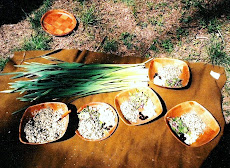









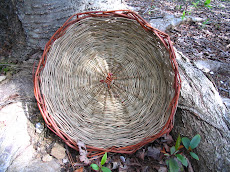







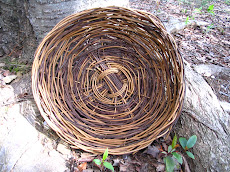

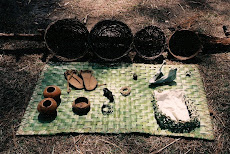


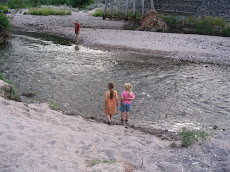

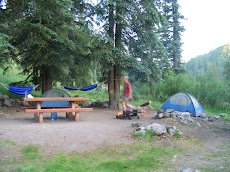


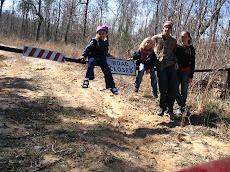






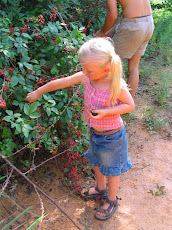







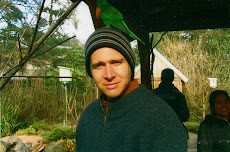
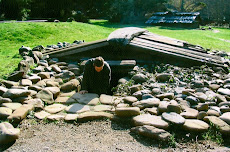

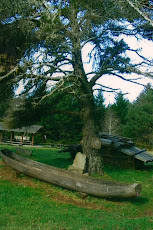



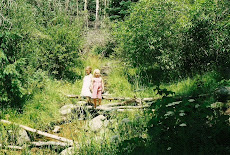
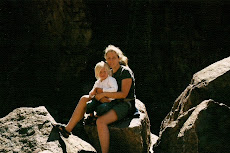
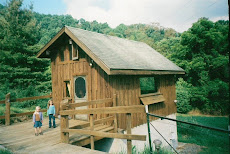

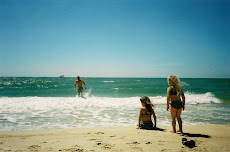
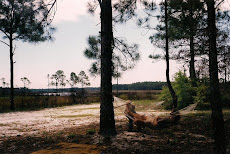

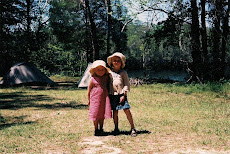.jpg)

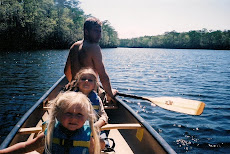.jpg)

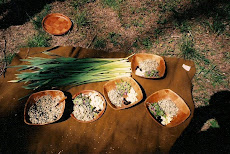
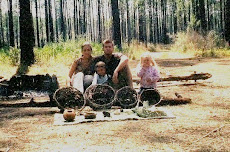
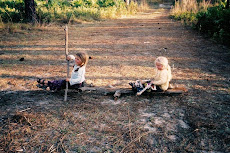.jpg)



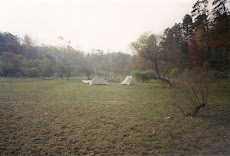

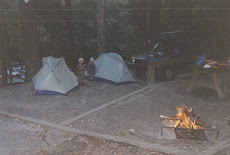


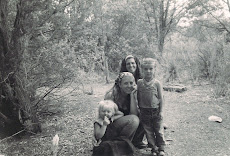.jpg)
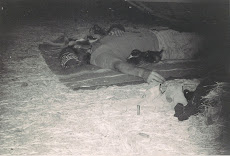.jpg)
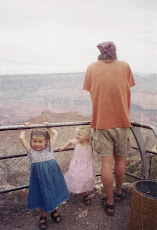
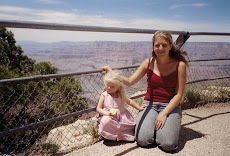.jpg)
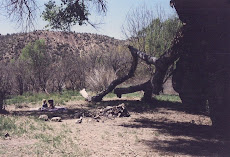.jpg)
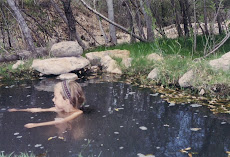
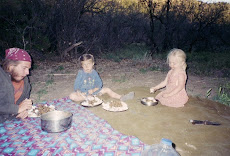.jpg)
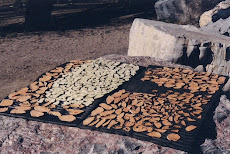
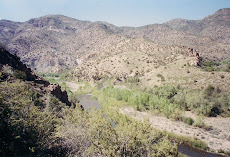.jpg)


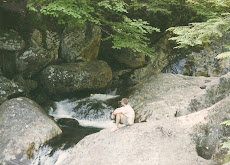


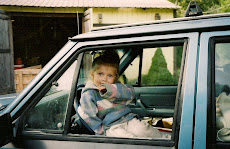




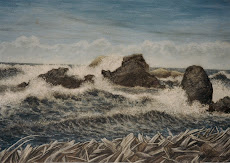




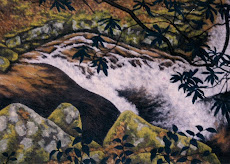








No comments:
Post a Comment